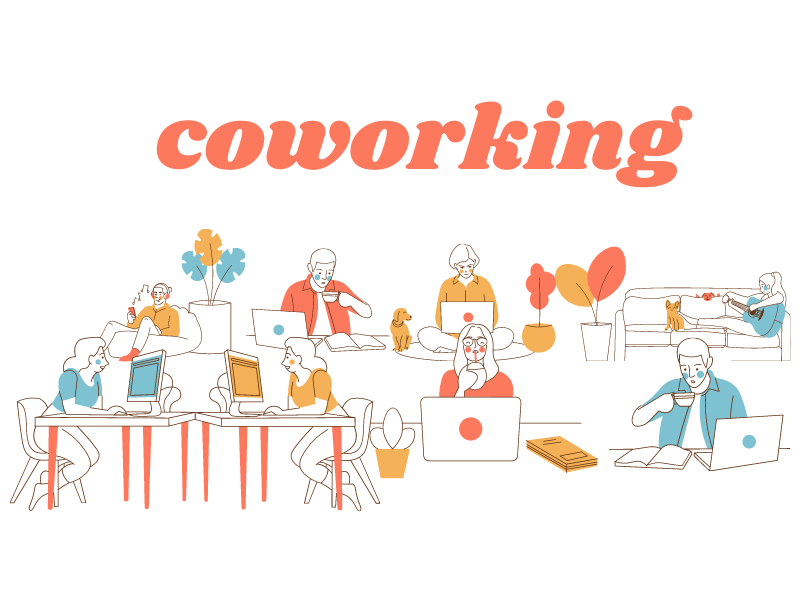Coworking is a term that has become very common, but few people can explain what it means, or how it works.
The story of coworking began in 2005 in San Francisco, and slowly spread around the world . The first such office space in Italy made available between 2008 and 2010. We can say that coworking is now well-established, particularly in Milan and Rome. In 2019 there were 91 coworking spaces in Milan, a ratio of one such office per 14000 people. In Rome, with 57 spaces, the coworking ratio is 1: 45000 inhabitants.
What is coworking and how does it work?
I haven’t found any proper definitions, so I’ll give you mine:
Coworking is a model for a new way of working characterized by the sharing of a work-space with individuals and professionals who may come from differing professions, organizations and sectors.
The peculiarity of coworking is that by working in a shared space, each individual practises his or her independent activity but can, should they wish, interact with any of the other individuals present by exchanging ideas and discussing various work issues.
Let’s see what coworking is from an administrative and contractual point-of-view. It is a type of contract where a business-person or a company makes spaces furnished with resources and technology, available to the self-employed or to companies. This allows the users to immediately activate their professional work, without having to wait for financing, grants, the supply of equipment or a connection to a critical utility such as the internet.
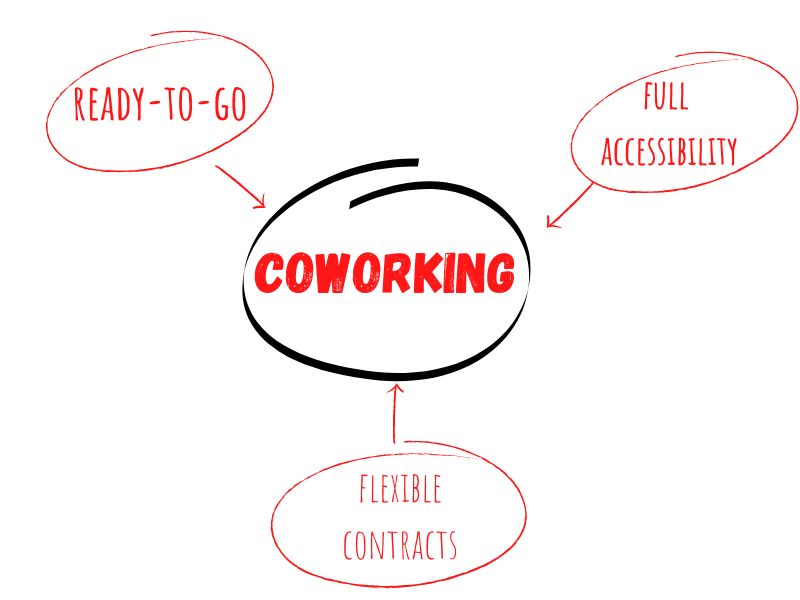
If we were to list three adjectives to describe corworking we can say:
- Immediate: zero bureaucracy. There is no necessity for special permits or requests for connections. The property has workstations ready for use (ready-to-go).
- Flexibility: It’s possible to utilize the a workstation just for the time required without contractual obligations
- Availability: coworking offices, besides being located in strategic places (areas), are cheap and anybody is free to negotiate stipulate a particular rental contract, also including those not who are neither freelance nor a company.
Pay-per-use
The classic business model method is the pay-per-use one. You pay for the workstation only for the time that you utilize it. Usually there is a tariff plan where the fee decreases according to the dwell or usage time. Usually work stations, internet access, periodic cleaning, scanners, the printers and client reception are included in the tariff.
By utiliziang coworking you access a service
The pay-per-use solution is what coworking is all about. It’s different from the conventional way where companies or people hire a property.
Coworking to accesses a service which gives a person the use of a prepared workstation for a predetermined time. Internet access, periodic cleaning, scanner / printer use and client reception are included in the tariff. This is not the case with the classic real estate business , where these costs must be borne by the lessee.
However, coworking businesses can coexist with real estate businesses. They aren’t competitors and some clients use both solutions.
Coworking offers a service to those who need a workstation for reasons such as a freelancing in order to keep costs down, or for companies that have recently relocated some of their activities, or for an independent contractor who needs a meeting room for half a day.
The Coworking Structure
Obviously, each coworking situation differs, with needs for particular facilities and services according to the context in which they operate. In principle, a coworking space is an open-office arrangement with shared desks, meeting rooms,instruction rooms, event spaces, relaxation areas and also dedicated offices where required.
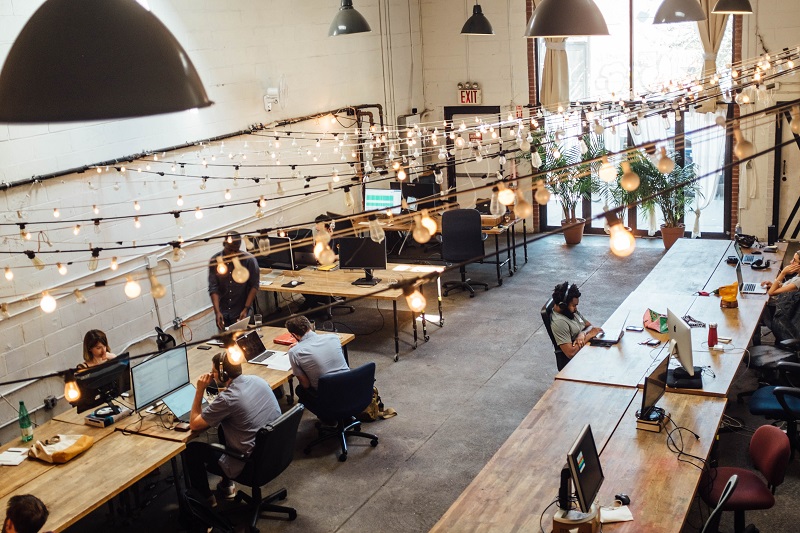
Open space:
The open space arrangement is the most classic form of coworking where many of the facilities can be shared, particularly between freelancers. Although it’s not an ideal place for working teams, sharing the same place provides many opportunities for the freelancer and the independent contractor.
Codesk:
This is usually an area separate from the open space area. It comprises a small modular office which allows people to work as a team away from the common coworking space. Usually it is used by working groups and companies.
Dedicated office:
This is a classic office. A private office completely detached from the open coworking space but with all the necessary facilities and equipment.
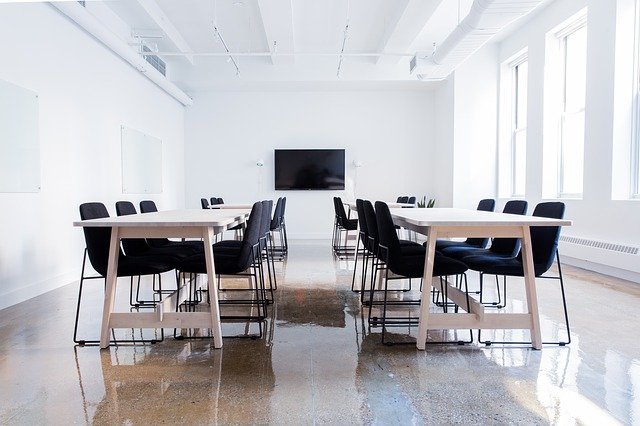
Meeting rooms:
These are like the classic company meeting room. They have all the equipment you would expect to find in a large company meeting / presentation room: for example, slide / video projector and screen, basic or interactive electronic whiteboard, paper flip-chart and, where required, complete video-conferencing facilities. They are spaces where it’s possible to bring professionals from two or three different companies together for meetings and / or brainstorming sessions; for secure private meetings or for call-conferencing.
Instruction rooms:
These spaces are bigger than those used for meeting rooms. It’s possible to accommodate twenty (or more) people in them, and there are individual writing / laptop desks or chairs with armrests for note-taking, as required. Also in these spaces also have slide / video projectors and screens, basic / interactive electronic whiteboards, paper flip-charts and where necessary, audio equipment.
Usually these types of spaces are used for training courses, business presentations, workshops or large meetings.
For shareholder meetings and the like, there may be a raised dais where, for example, company directors are seated to address and take questions from an audience. These types of spaces are often quite large and located adjacent to relaxation / coffee-break areas.
Event spaces:
These are the largest spaces in the coworking scene; usually they are covered areas dedicated to significant events. They can accommodate from 80 to 100 or more people who are constantly exiting and entering, and moving about on foot, along with fixed display-booths and often quite elaborate equipment displays. Such spaces have relaxation / coffee-break areas, food catering services and where requested, private mini-conference rooms for vendor / client meetings.
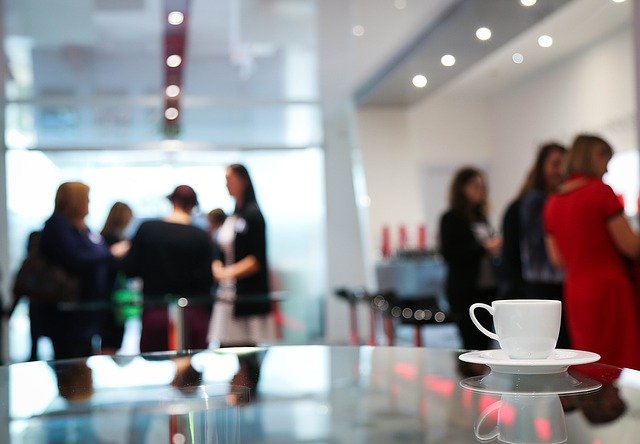
Relaxation areas:
These are the most popular spaces in coworking. Joking aside, they are important spaces where new collaborations are initiated and ideas explored. As the quality of the ambience needs to be high, they are bright, informal places with bar service, tables and sofas, surrounded by sound-absorbing panels or walls to shut out the event noise places where people can relax and switch off for a moment in order to chat together and recharge their batteries.
Advanced services:
Some coworking areas offer more advanced services. An example is the virtual office, complete with a receptionist, where delegates and freelancers can receive and respond to their mail. It’s even possible to have a personalized customer service space which is the freelancer’s registered office and the coworking address his legal entity.
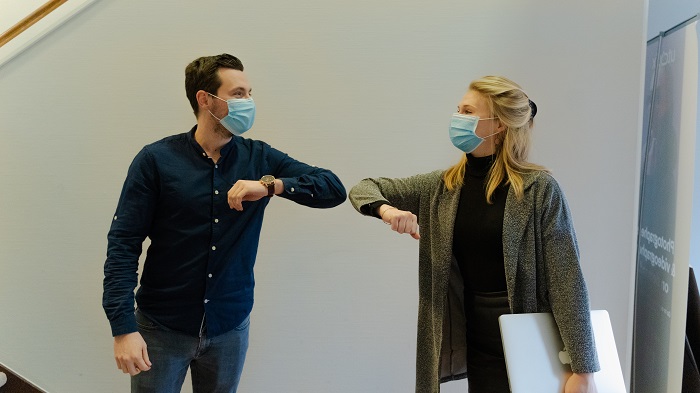
The coworking in post-covid era
Some coworking companies reported the decline of of full-time office work since long before the Covid-19 pandemic began. They started full network deals to allow to employees to work everywhere an to bring the office close to they live.
The increase the remote working dropped the consecutive hours in a coworking. This changement increased the workstations turn over. So, the office tend to be a modular to allow to change quickly form.
“The major flexibility required is becaming a coworking strenght because it turns out to be the type of structure that workers need most in the post-covid era” says Mark Dixon, CEO and founder of IWG the giant company of space office and coworking spaces.

